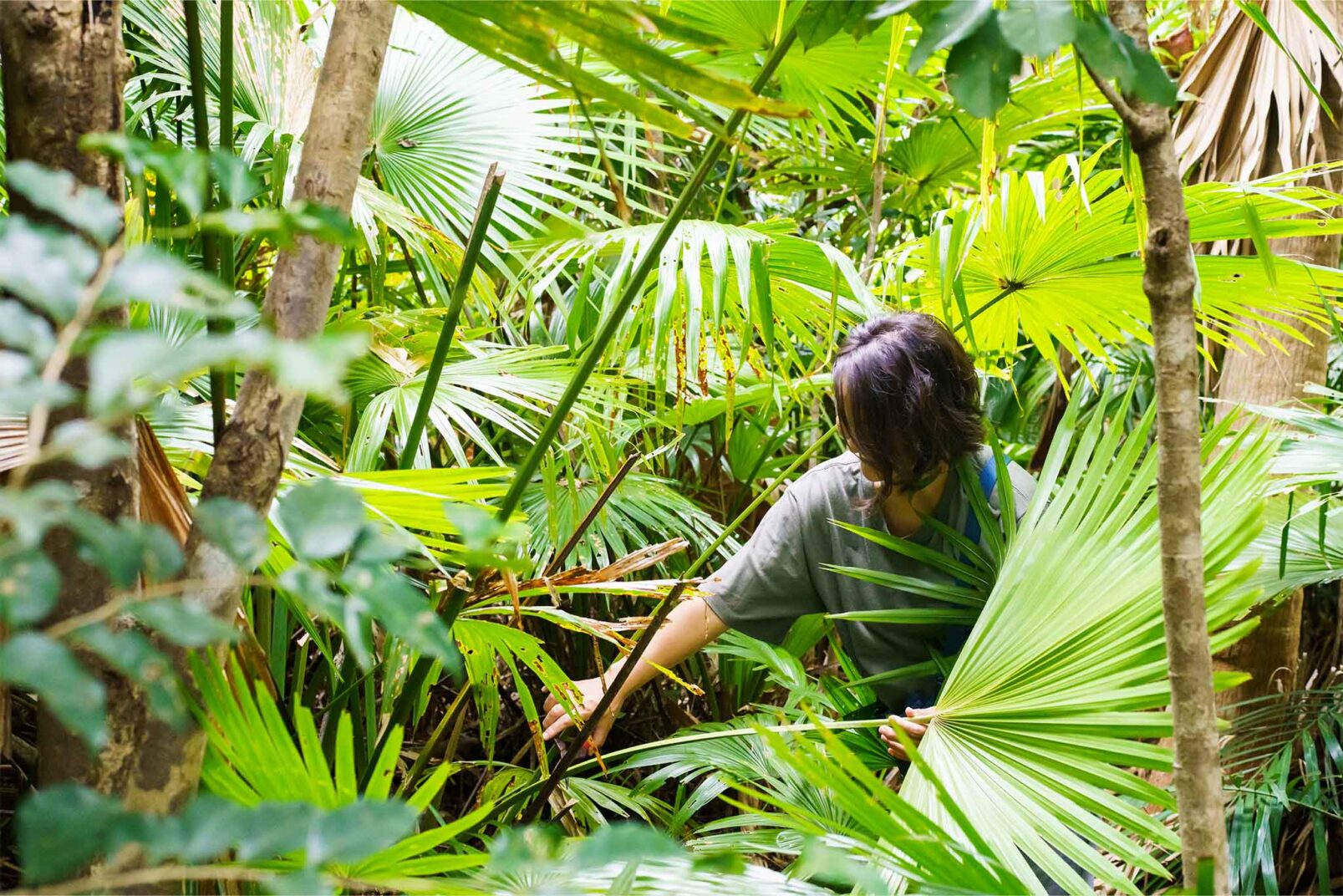Gentle waves lap the sandy white shores of Iheya island, and colorful fish fill the fringing reefs beneath the surface of its startlingly turquoise waters. You might expect a steady stream of sunbathers and snorkelers in such a picturesque place, but not here. Isolated by an 80-minute ferry ride from the small port of Unten on Okinawa’s main island, and with only two sailings a day (weather permitting), few tourists ever venture to the idyllic hideaway that is Okinawa’s northernmost inhabited island. And with fewer than 1,500 residents, it’s no surprise to find Iheya’s pristine beaches conspicuously empty.
But that is just how Masami Koreeda likes it. A former fashion stylist who now crafts traditional folk tools on the island, she left Tokyo over a decade ago in search of the slow life. “I liked living in Tokyo,” she says with a warm smile. “But I was so busy working for a fashion magazine, sleeping for only three or four hours every night. It was exhausting. I realized it was time for a change of pace.”
A native of Kagoshima, the southern Kyushu city known for its active volcano, Koreeda would frequent the nearby island of Yakushima to visit her close friend from high school. “I fell in love with the island lifestyle,” she explains. “I love surfing and have always enjoyed the laid-back vibe of places like Thailand and Hawai‘i.” So when it came to searching for a new place to call home, Okinawa was a natural choice.
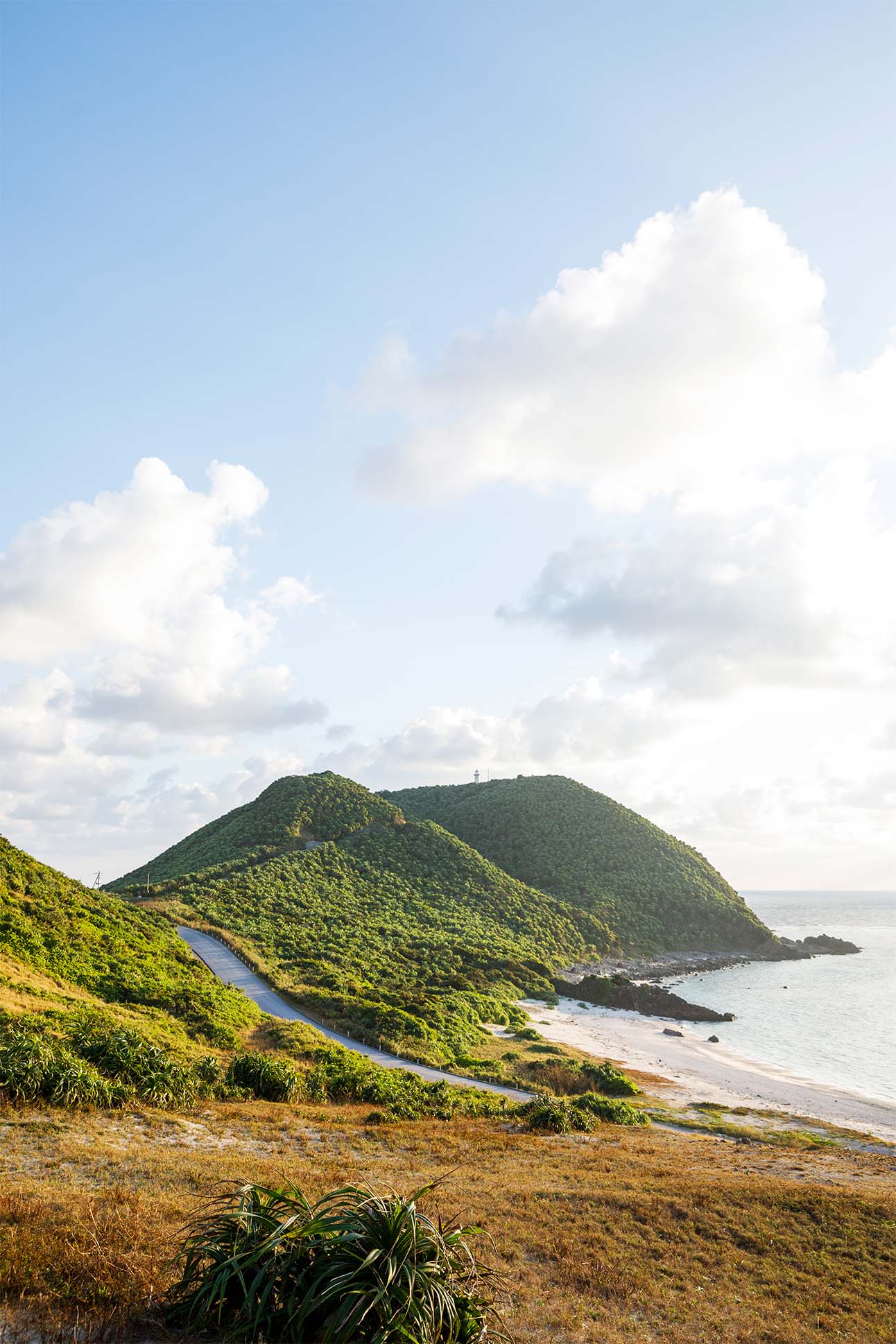
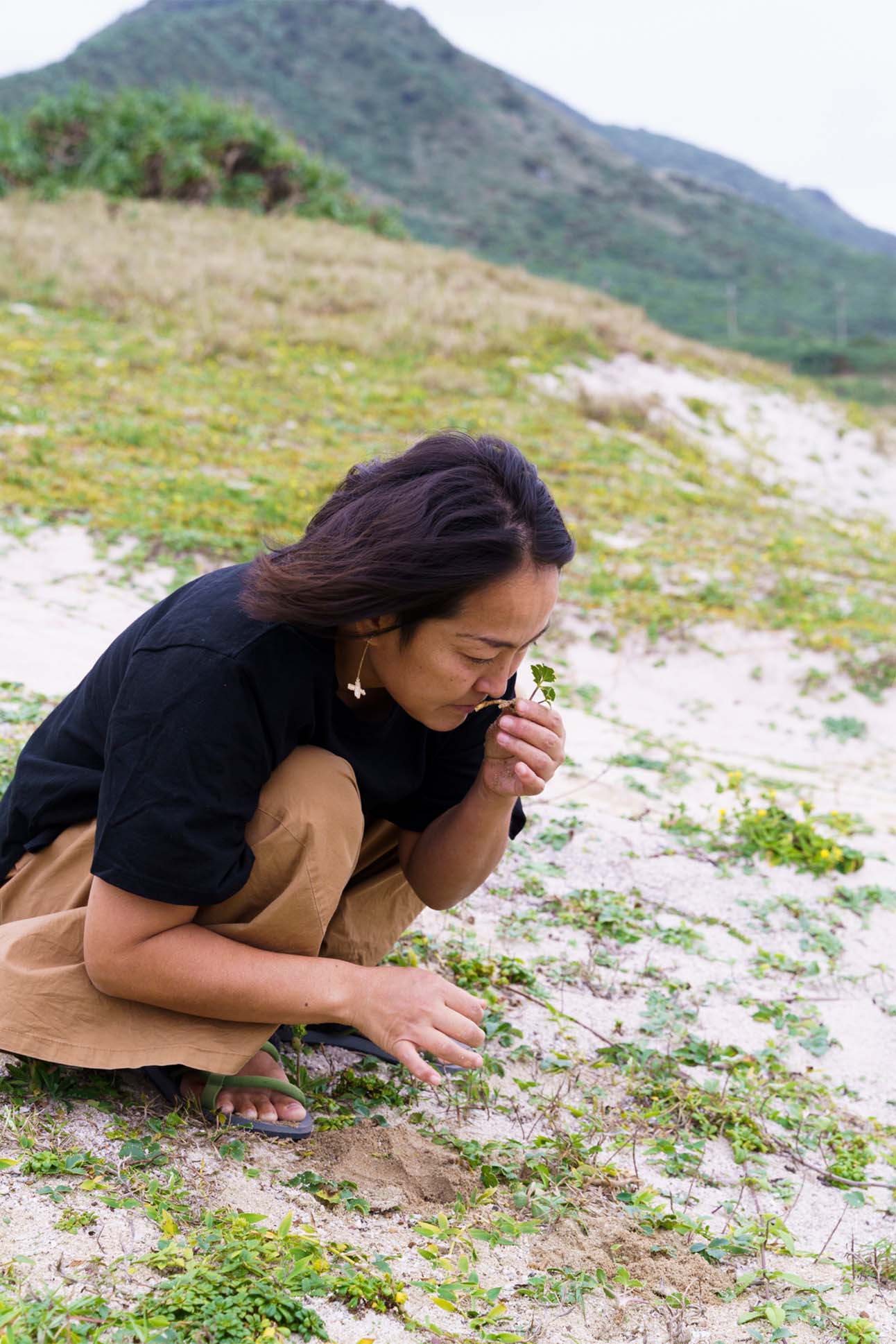
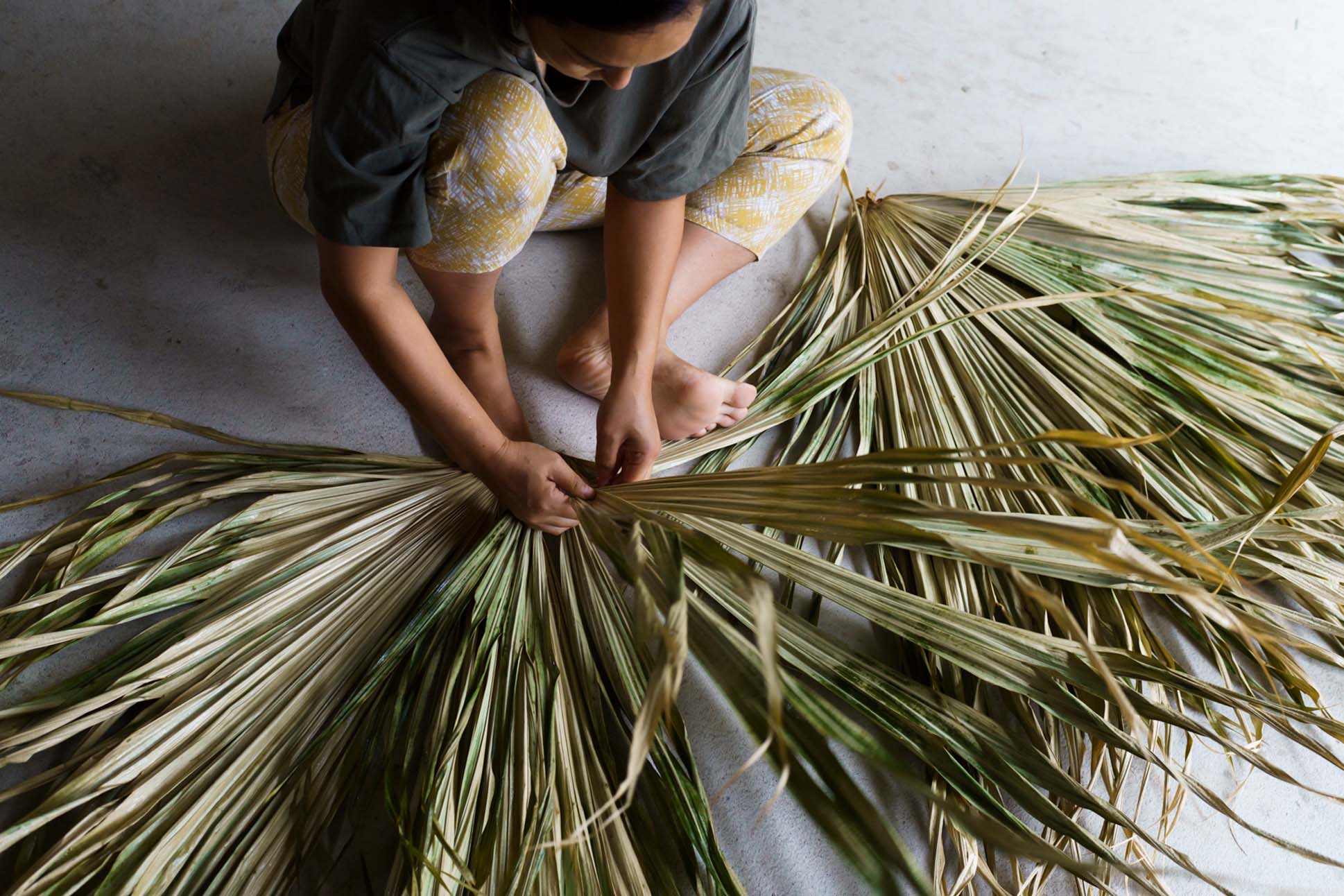
Koreeda first moved to the small island of Irabu in 2011 to run a minshuku (bed and breakfast), and it was there that she began to develop an interest in the local crafts. “When I visited neighboring Miyakojima, I would find discarded old baskets and other things, and it turned out that absolutely no one was making them anymore,” Koreeda recalls of these traditional items and tools, which were crafted from the leaves of kuba, a type of fan palm abundant in the hills and forests of Okinawa. “So I took them home and deconstructed them to see how exactly they had been woven and made.”
Highly valued for its strong, water-resistant leaves, kuba has long been prized both as a crafting material and for its connection to utaki, or Ryūkyūan sacred sites. In Okinawa, where spiritual practice is rooted in natural settings more than the shrines and temples common in mainland Japan, the kuba growing in these revered places have also come to be associated with the divine. But for Koreeda, it is the simple, traditional utility of her creations, along with their natural and local origin, that she hopes will resonate most with those who use them.
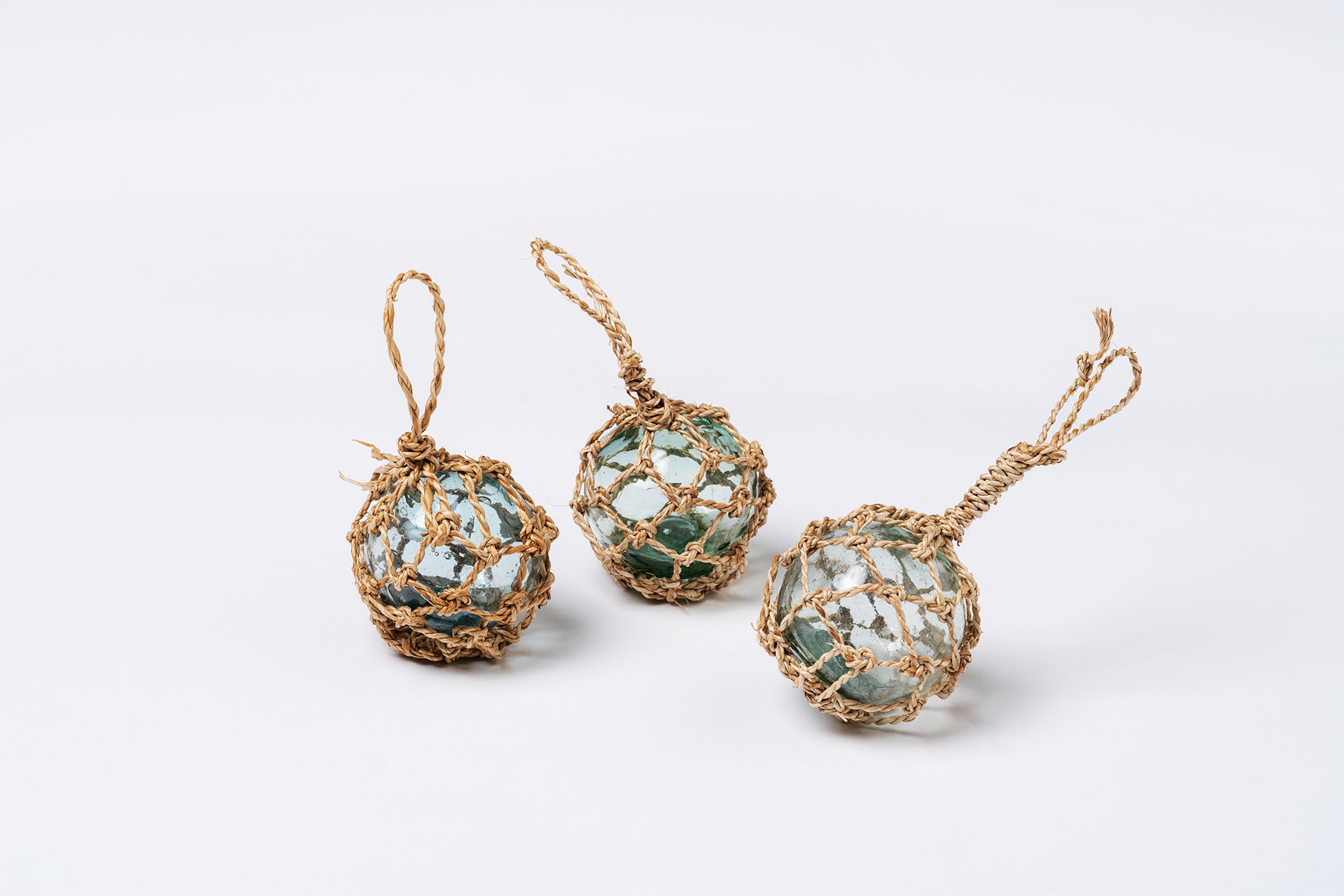
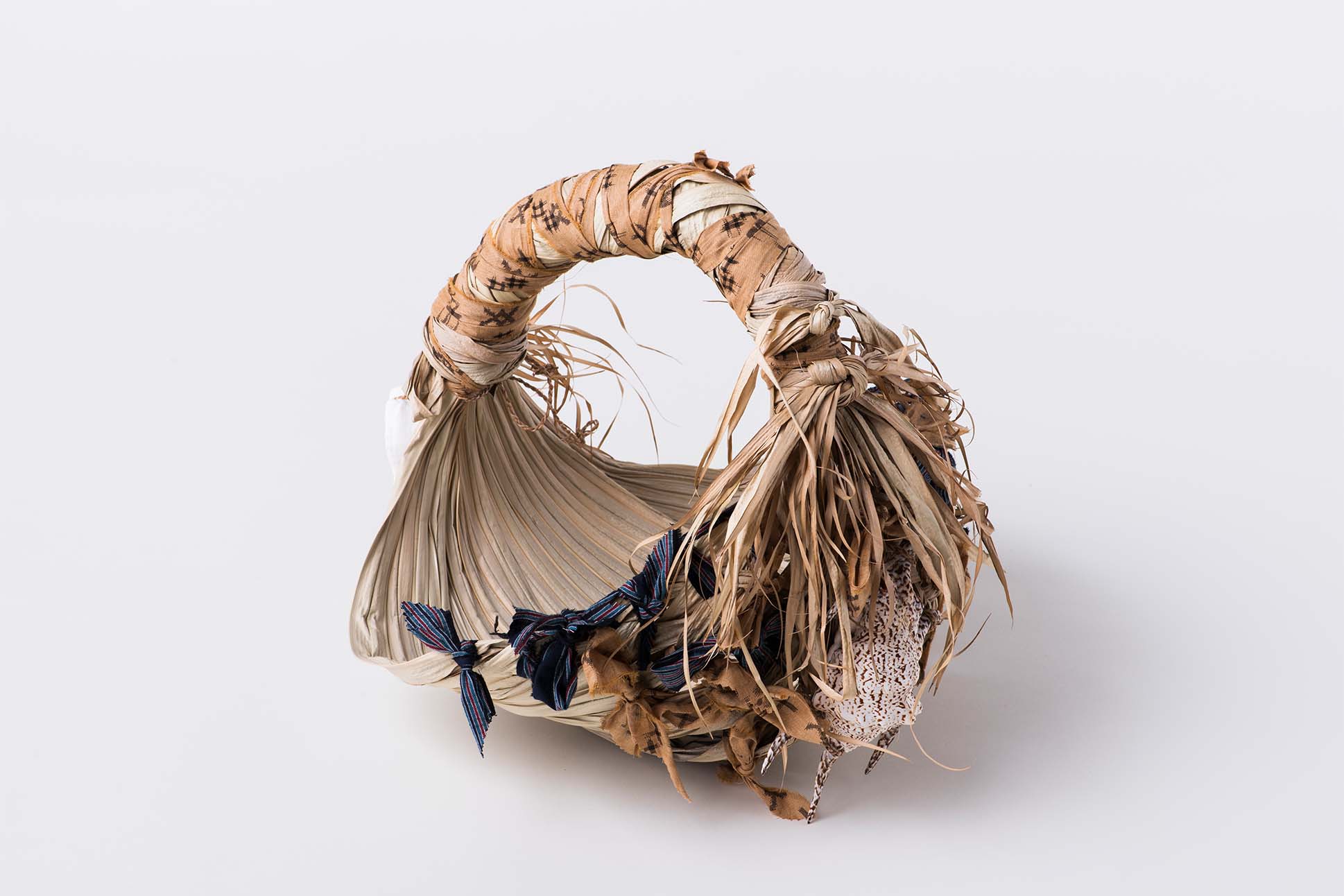
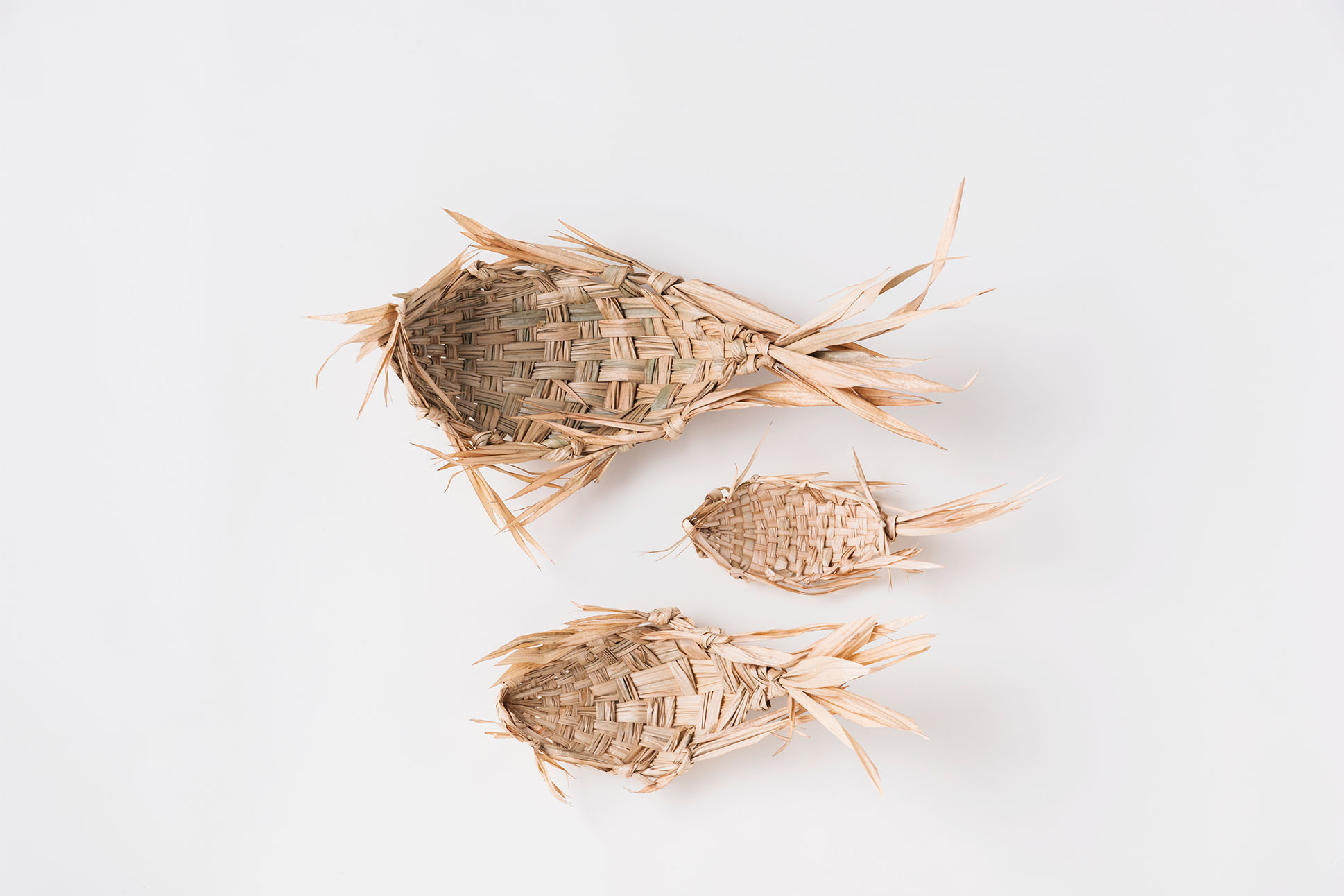
After five years on Iruba, Koreeda relocated to Iheya, finding even greater solace in the island’s mellow charms and natural landscape, where forested mountains run like a spine from tip to tail along its spindly and narrow 14 kilometers. Within the handful of small and sleepy settlements dotted along its eastern coast, ancient local festivals are very much a part of daily life, and the community still prays for plentiful rice harvests and hearty brews of awamori.
Although Iheya is home to a unique type of kuba—a fine, durable variety ideal for Koreeda’s craft—only one other resident was making use of it when Koreeda arrived on the island: an elderly hatmaker. The two are now good friends, regularly venturing into the mountains together to gather kuba leaves with a few local ojisan (elderly men).
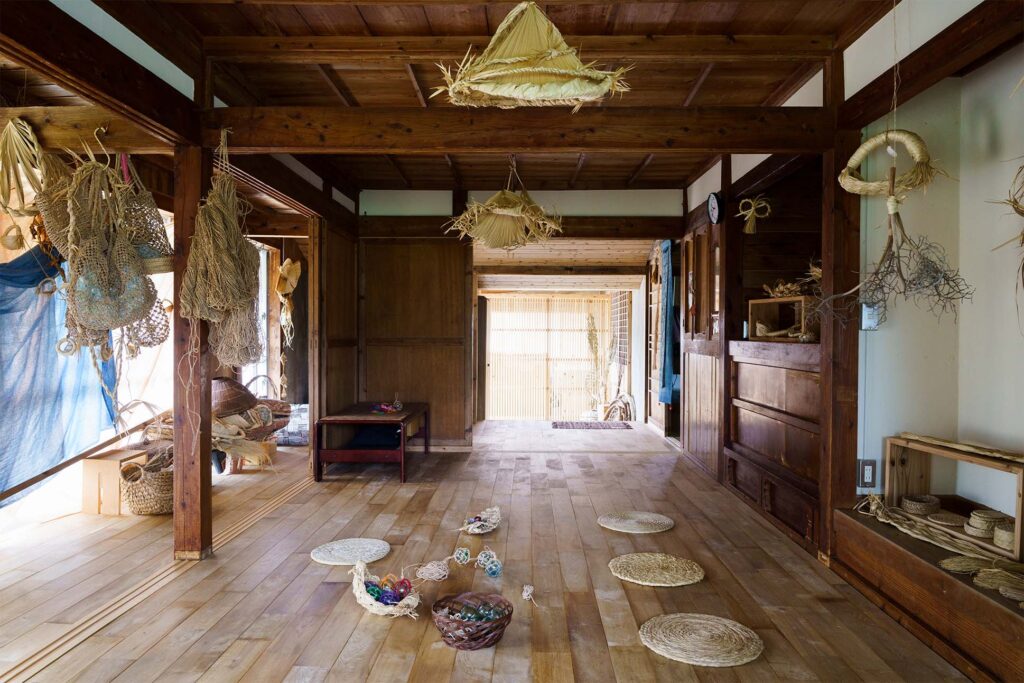
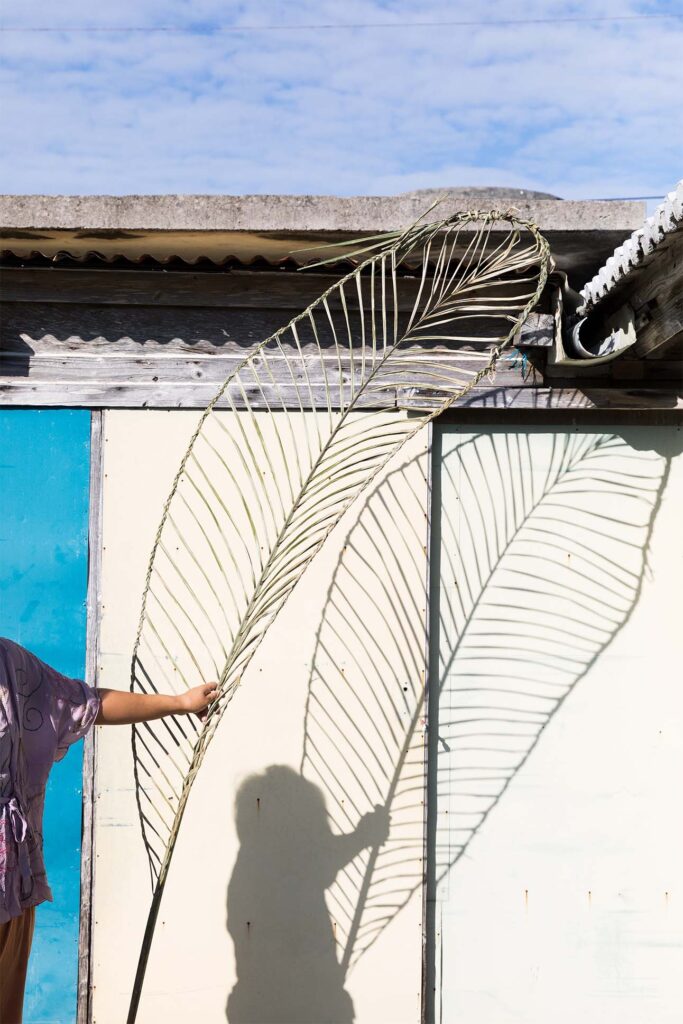
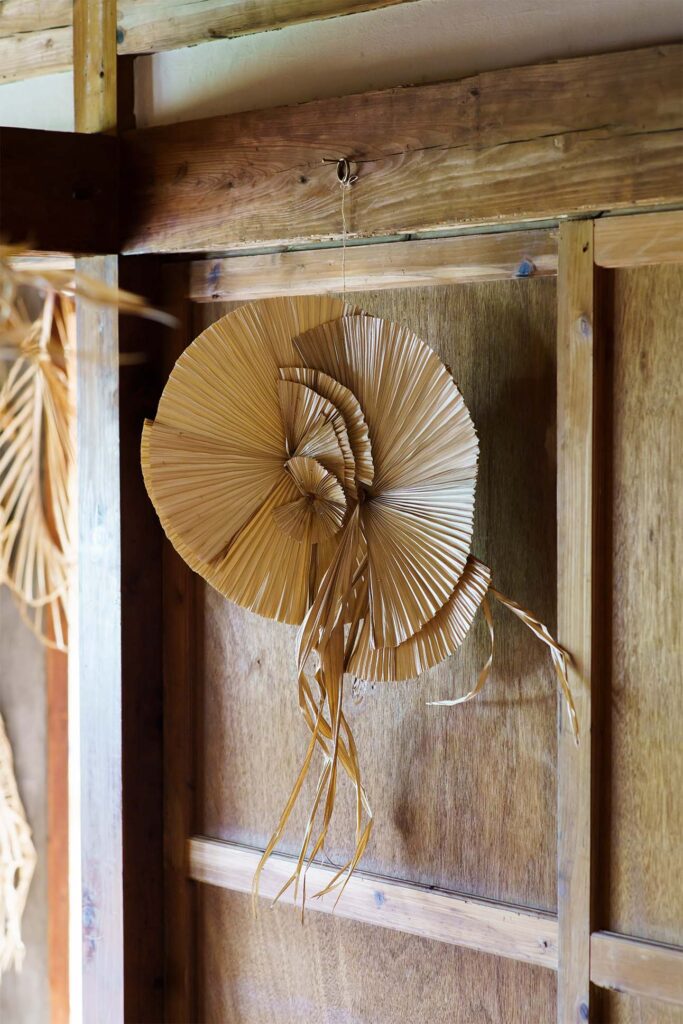
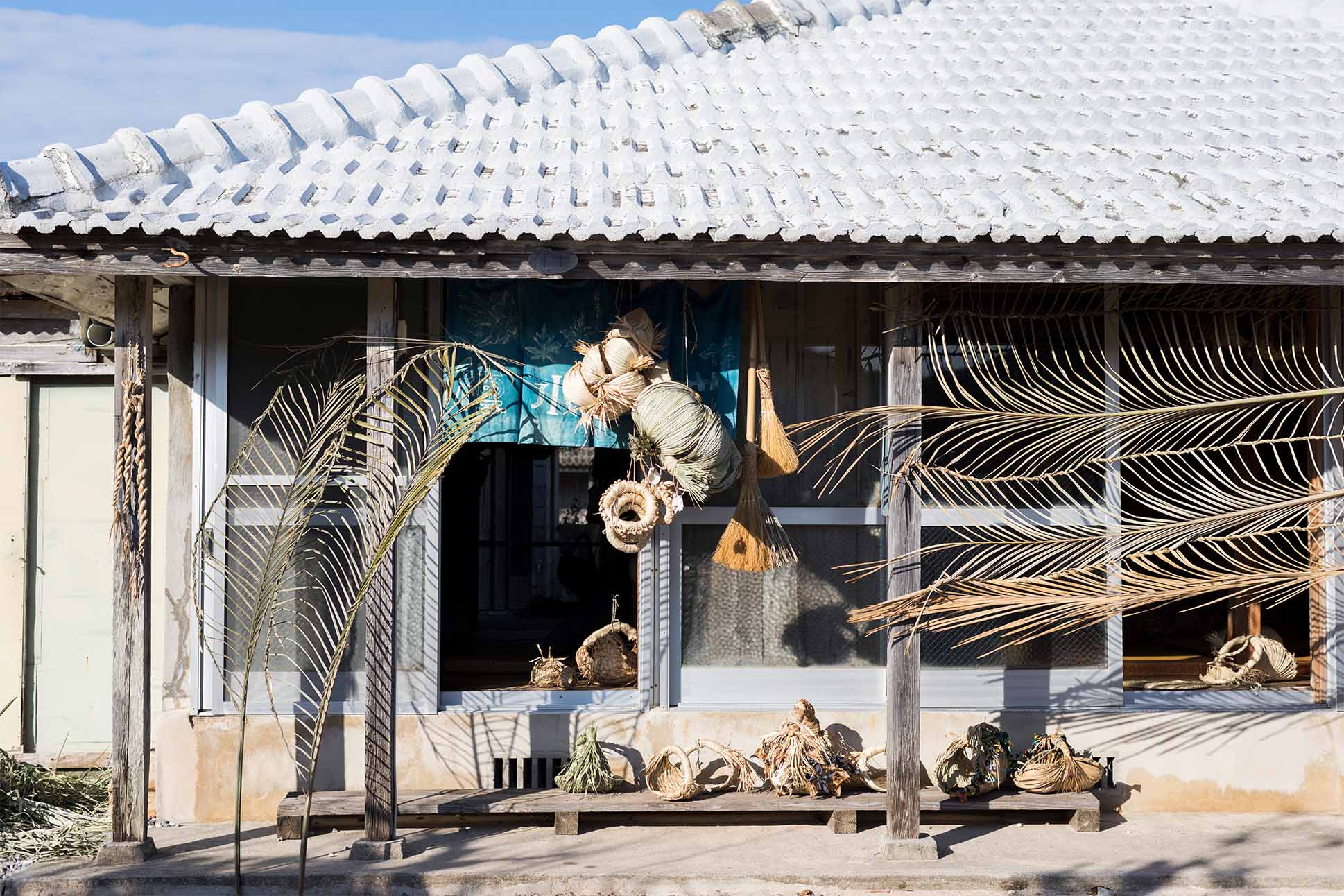
Koreeda’s brand, Syumidoka—a name formed from the Japanese characters for “seed,” “water,” “soil,” and “flower”—alludes to nature’s cyclical regeneration of resources. Her wide variety of products are crafted from materials found close by: kuba leaves are woven into baskets, dried grasses serve a multitude of purposes, seashells become charming ornamentation. As Koreeda puts it, her aim is “to make practical and beautiful items that put no pressure on the earth and that, perhaps, will one day return to nature after serving their use.”
It’s an ethos that echoes life on Iheya as a whole, where the culture moves in step with the rhythms of nature. Youth leave the island in their mid-teens to continue their schooling, often returning years later to harvest mozuku (edible seaweed), the island’s main industry, and to start families of their own. This natural ebb and flow remains a constant, helping to sustain the island’s traditions and ways of life that have barely changed for generations. For Koreeda and others, the quiet allure of Iheya remains—for now, at least—a well-kept secret.

